Schuberth C3 Pro helmet review
Published on: 04 January 2021
CLICK SCHUBERTH C3 PRO HELMET TO SHOP WITH FREE UK NEXT DAY DELIVERY
The Schuberth C3 Pro is a helmet that has been around since 2014, when it replaced the original C3. It might therefore seem a little strange that we should now be reviewing the helmet so many years after it was first released. But we have never formally reviewed the C3 Pro on its own, and it is still a very fine helmet, so better late perhaps than never.
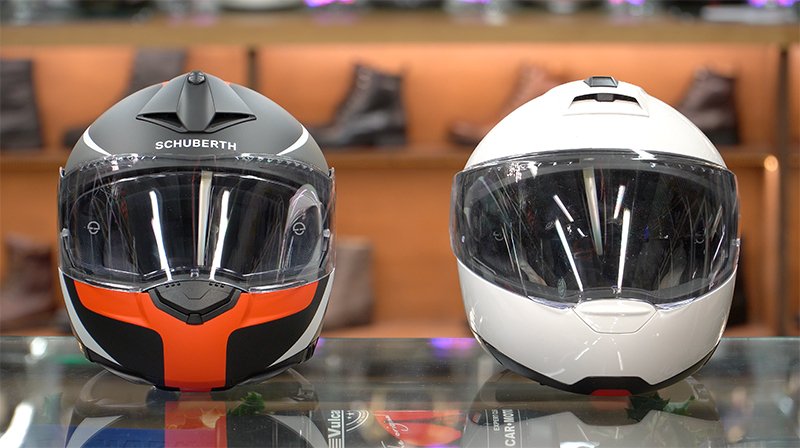
As you may know, the C3 Pro was joined by the C4 a few years ago, and by the C4 Pro shortly thereafter. The C4 was initially beset with issues, and although these were all resolved when the new C4 Pro model came along, there is still a widely-held view that the C3 Pro was, and is, more than its match for the C4 Pro.
There are many, by the way, who believe that the C4 was intended as a replacement for the C3; that it was an upgraded model, but that was never the original thinking behind the C4. The C4 was originally conceived as a ‘sports’ flip-lid that would be better suited to those who leant a bit more forward over the bars.
Actually, some time after the C4 was launched, Schuberth did try to re-write history, suggesting that the C4 was equally suited to upright bikes, but the taller and wider visor on the C4 was very much designed to give the rider a wider field of vision when riding in a more aggressive position.
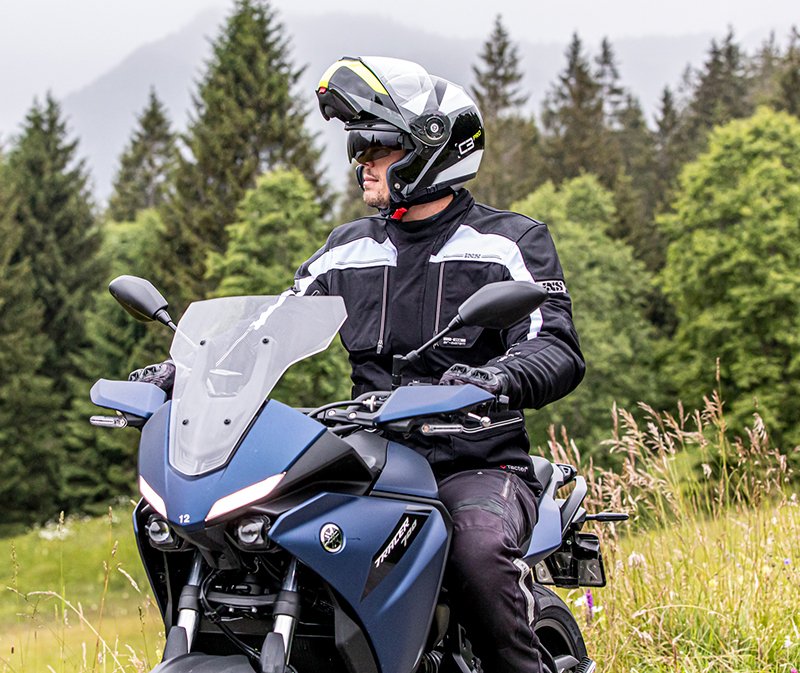
The C3 Pro, by contrast, is very much a sports-touring helmet, aimed at those who ride in an upright position. It is a well proven helmet. It is perhaps the best-selling, flip-lid helmet of all time. It has been a favourite of Police forces up and down the country for many years, and is still the go-to helmet for many long-distance commuters and world travellers.
So let’s go back and look at the C3 Pro in a little more detail.
When the C3 Pro helmet was originally launched, it embodied a number of improvements over the C3. An upgraded front spoiler, a better rear wing to reduce lift, a plusher interior, improved venting and more sound deadening to reduce noise levels. At the time, the C3 Pro was widely lauded as the most quiet helmet on the market; and indeed it is still up there amongst the very quietest helmets money can buy. Of course, in this it is helped by the fact that it is a flip-front helmet.
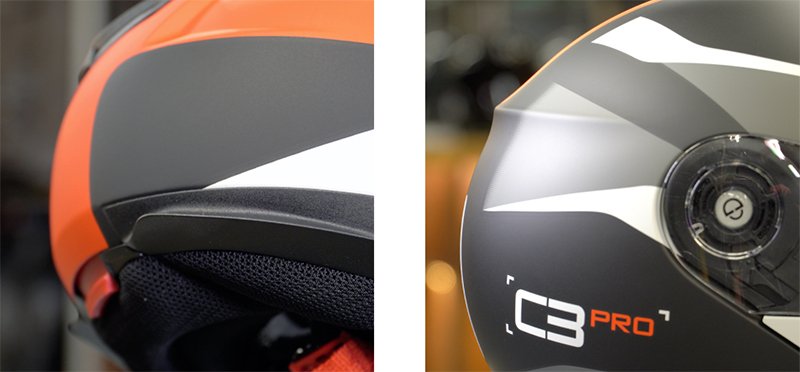
Not everybody understands why a flip-lid helmet is quieter but, in essence, it is down to the fact that, because of the way we put on a flip-lid helmet, it has the ability to sit much tighter at the neck. This closer-fitting neck roll serves to prevent the ingress of air. And this reduction in oncoming air reaching the ears reduces the level of noise.
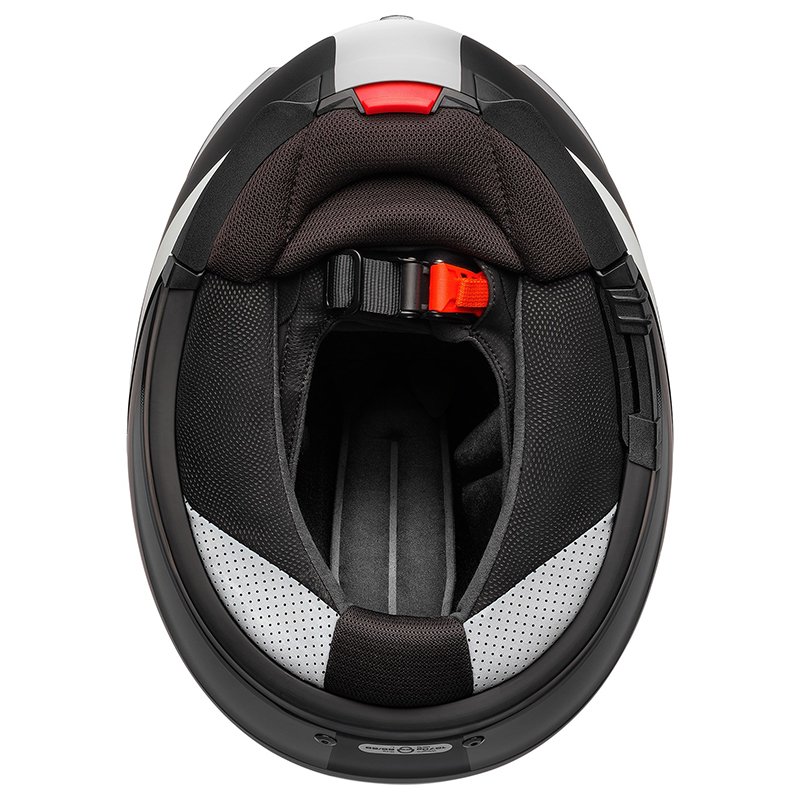
The shell of the C3 Pro helmet is constructed of a fibreglass re-inforced Duroplastic matrix. Sounds complicated, but basically it’s fibreglass intertwined with other organic fibres, not dissimilar to the construction used by Shoei. The result is a helmet that is strong, but with the ability to absorb energy in an impact. At launch, the C3 Pro was heralded as super light, but at a weight of some 1570 grammes in a size medium, it’s never going to crack it in Moto GP.
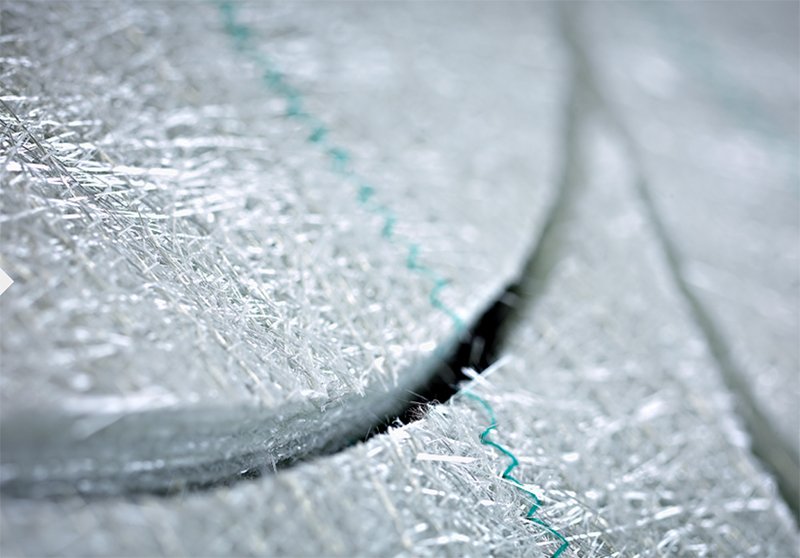
We are normally a little dismissive of helmets that only come in two shell sizes; that’s all you get with the C3 Pro, however. But all we can say is that it is not, nor has it ever been, a problem with this helmet. It’s a helmet that fits very many people very well indeed. It has a slightly rounder shape than your average Shoei so, for some, it may well be the only high-end flip-lid that works for them. What the C3 Pro does not offer is the facility to fit differently-sized cheekpads or headliners, in the way that the Shoei Neotec 3 does. Is that a shame? Yes, but this is the way that all Schuberths are. All it means is that if a Schuberth does not fit you properly when you first put it on, you should get over it; there’s nothing to be done.
But let’s look at some of the detail on the C3 Pro because, in just about every other respect, it is a very accomplished helmet.
The C3 Pro is a comfortable helmet. There are plusher linings out there, but you could wear the helmet all day long and not complain about the feel. The lining is infused with Coolmax, which might account in part for the helmet’s long-distance credentials. Coolmax aids moisture wicking and breathability, and any moisture it does absorb evaporates quickly.
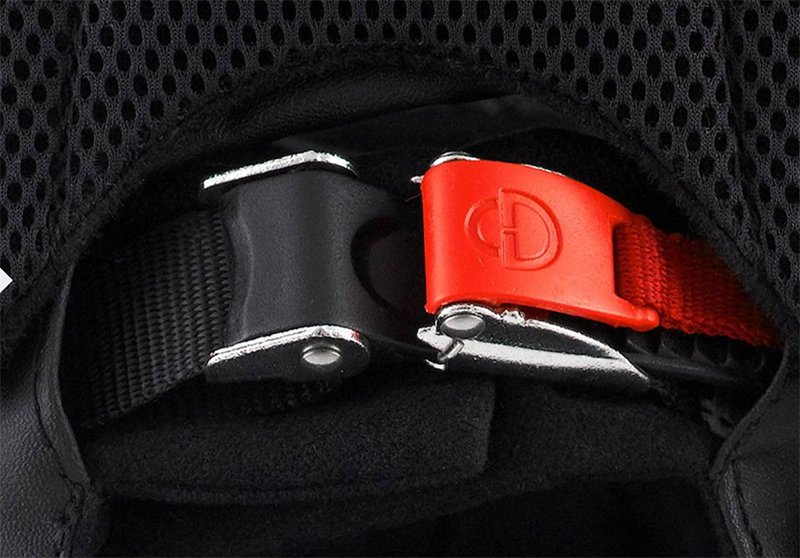
The helmet fastens by means of a micro-ratchet, as indeed do all flip lids. One of the unique feature of Schuberth helmets, however, is how the chin strap is secured to the helmet. It’s a system known as AROS. On both sides, the chin strap passes through a loop in another strap that is riveted to the inside of the shell at the back of the helmet. It makes it impossible for a helmet to come off in an accident. It’s an interesting little design detail.
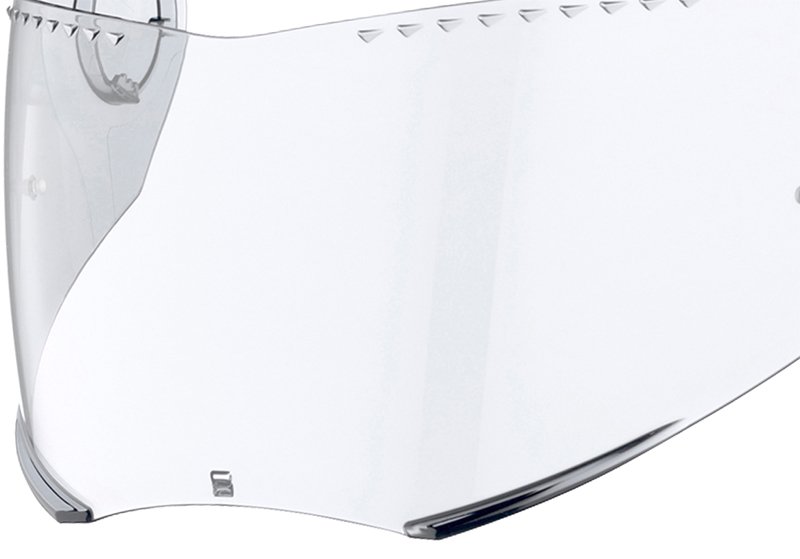
The visor is anti scratch, and of what is known as Grade 1 optical quality. It is really easy to remove the visor; and of course no tools are required. There’s also a very useful, drop-down sun visor. Schuberth claim to have invented this particular accoutrement, although there are others who make the same assertion. Currently the C3 Pro only comes fitted with a Pinlock lookalike, and that for us is unacceptable. Such compromises should not be countenanced on a helmet of this quality. Schuberth tell us that, at some point in 2021, all C3 Pros will come supplied with a top-of the-range Pinlock 120.
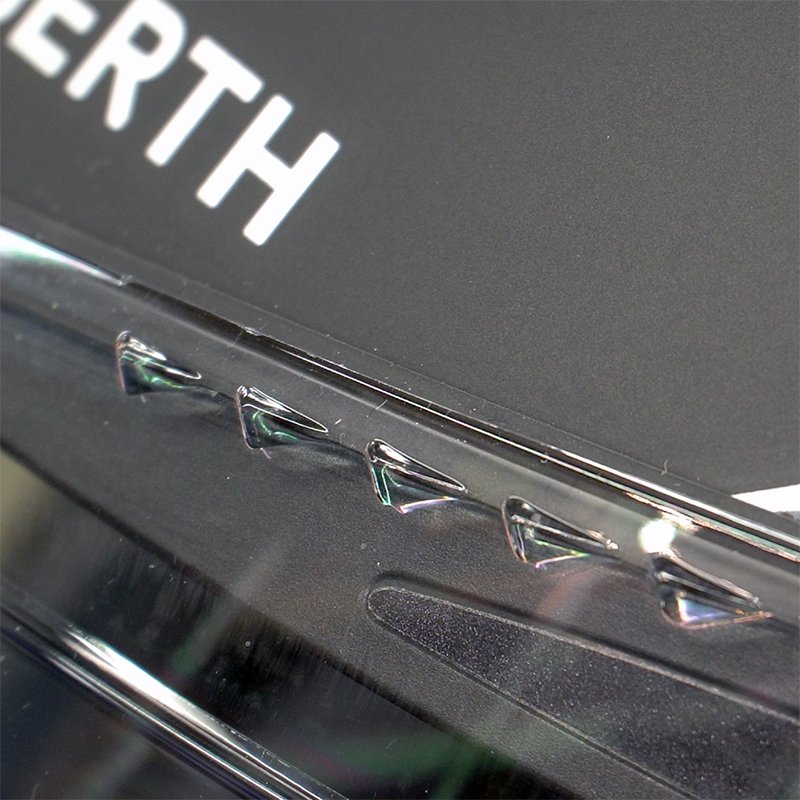
It’s perhaps only a little point, but along the top edge of the external visor there’s a line of mouldings, and these are known as Turbulators. They’re meant to prevent whistling. Well, my C3 Pro has never whistled, so perhaps they work! The visor does have a very useful ‘crack’ position that allows you to get a little bit of air into the helmet, in town for example. It’s something the Neotec doesn’t have. There’s also a locking mechanism to hold the visor down securely. Many a customer has come into our shop to complain about the air coming through the visor and the noise this creates. They normally feel a bit sheepish after we’ve explained to them that they’ve been riding with the visor unlocked. You have to click the visor shut to close it properly.
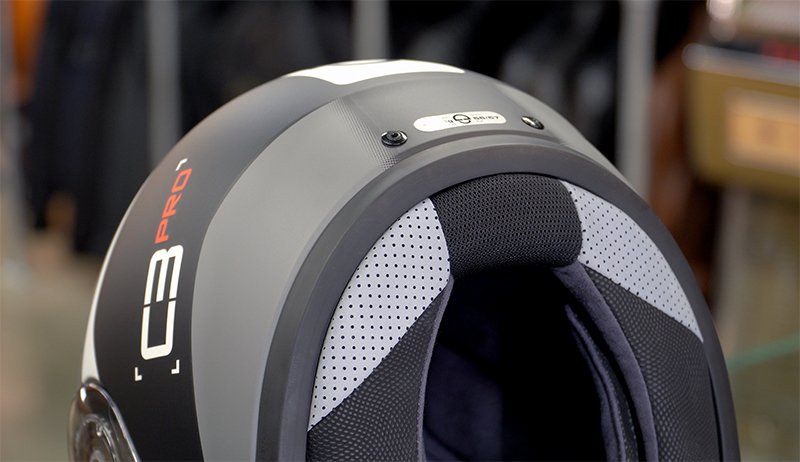
There’s another neat design touch with the Schuberth that works really well. The interior lining at the back of the helmet is highly reflective. This really does show up under a car’s headlight at night. Riding safely is all about marginal gains. And, without doubt, there are going to be times when this little feature helps you to get spotted by a vehicle behind you that little bit sooner.
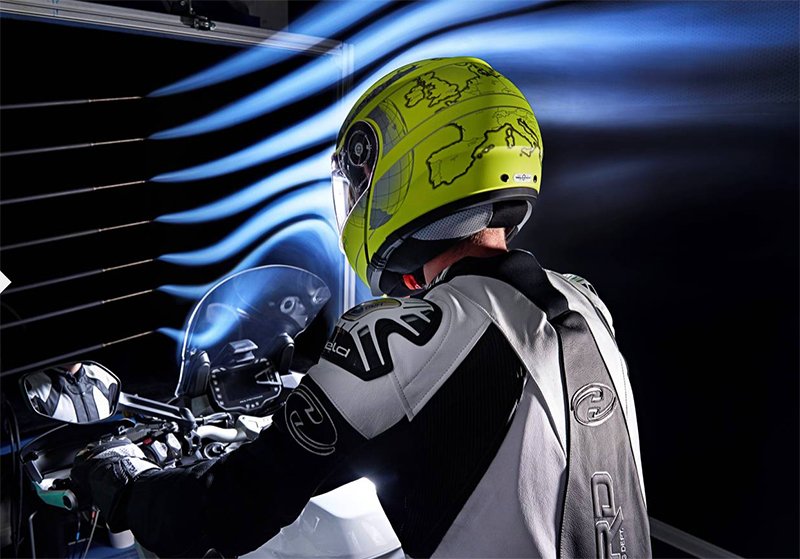
Now, we’ve alluded already to the fact that flip-lids are quiet helmets. And the C3 Pro is still the benchmark. Opinion is divided as to whether it is better or not than the Shoei. Schuberth tell us that their C4 Basic model is actually their quietest, but most ears are not going to be able to discern such minor differences in performance. The fact is that the C3 Pro is known for its lack of wind noise, and is still very much a match for the Neotec.
We all know, by now, that good-quality flip-lids are quieter because they have neck rolls that sit tighter against the neck, and usually a good chin curtain to boot. And yes, the C3 Pro does have a good chin curtain that can be removed if you don’t need it. That a flip-lid is quieter is a given, as far as we’re concerned; and it’s why most experienced, long-distance commuters wouldn’t wear anything else. But there is a downside to a tighter neck roll; and it is down to the fact that, if air cannot get into a helmet, it stands to reason that air also cannot easily exit the helmet. And it is because of this that flip lids can be more prone than full-face helmets to the accumulation of condensation and what we know as fogging. This puts a premium on two things. First, you need the best Pinlock. Second, you need good venting, and to know how to use those vents.
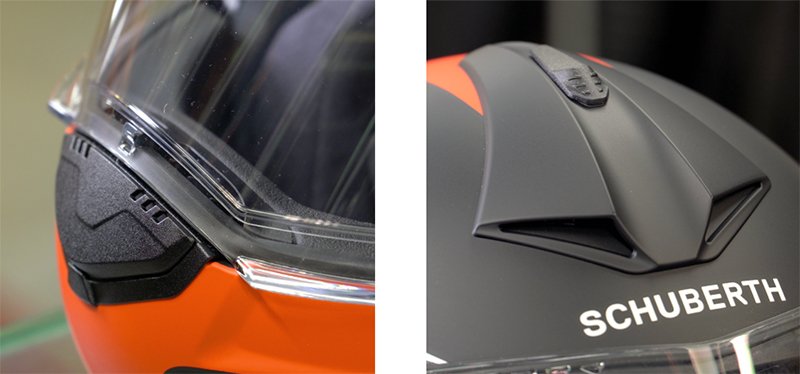
Luckily, the C3 Pro has good vents. Now, in the summer, open and close the vents as you see fit to control the volume of incoming air. That’s a personal choice and pretty straightforward. But in the winter months, things are a bit more tricky.
To prevent fogging you need to reduce the differential between the temperature of the air that hits the visor from outside and the air that accumulates inside the helmet. When it’s very cold out and you are generating hot air in the helmet, which you always will be, you need to increase the flow of colder air into the helmet. And you do this by fully opening the chin vent. In fact, the chin vent accounts for nearly 90% of air into this helmet; the brow vent just 10%. But ideally you want the air coming into the chin vent to exit the helmet before it warms up and becomes moist from your breath. You do this by also opening the brow vent. As the oncoming air enters the brow vent, it will suck out the stale, dampening air from in front of the rider’s face. This will help the visor stay clear.
Throw in a good Pinlock and you should be in the clear, so to speak. In extremis, ‘crack’ the visor open. Now, as we’ve said, the C3Pro doesn’t yet come with a Pinlock 120, so if you’re planning on doing a lot of cold-weather riding you might just need to invest in one; that’s going to be another £30.
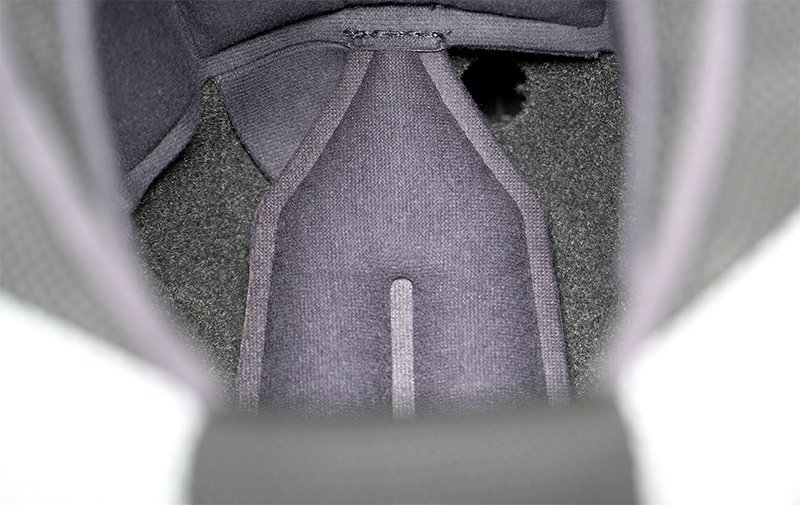
The Schuberth has one last little trick up its sleeve, in terms of ventilation. The brow vent feeds air into the to of the helmet through two holes in the eps. Unfold the lining at the forehead and two little ‘bunny ears’ will be revealed. When not folded in place these bunny ears will block air from coming into the helmet. It’s all very simple really. So when might you want to do this? In truth, probably only on a cold, dry day or night when you’re riding on a motorway. That cold air coming into the brow vent can become very uncomfortable. Shutting the brow vent would help, but completely blocking the vents with the ‘bunny ears’ will block off the air ingress completely.
Now when the C3 Pro first came out, the comms. capability was provided by Cardo; and it came in the form of a rather fiddly, replacement neck roll that contained all the hardware. But a few years ago, Schuberth tied up with Sena. The C3 Pro helmet now takes a unit called the Sena SC-10U. It’s very neat and works really well. There’s no box on the side. The microphone is particularly discrete. And the operating buttons sit atop the cheekpad, which is very useful and quite intuitive.
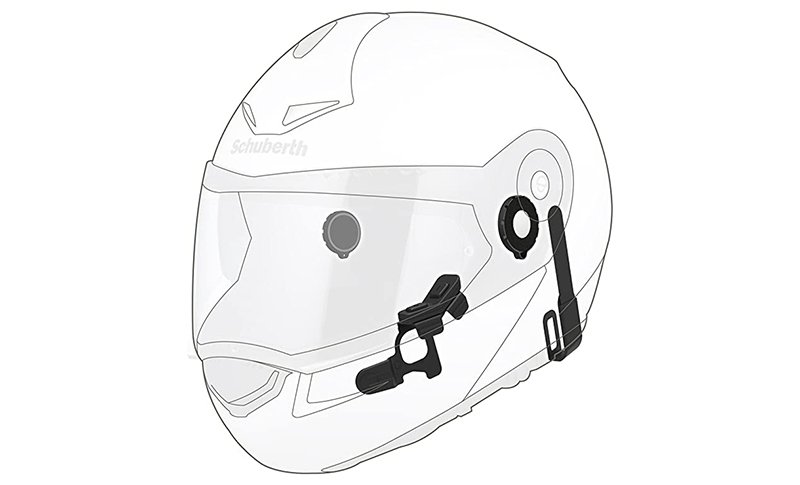
It only takes a couple of minutes to fit, and being Sena it means that conversing with somebody in a Shoei is always going to be straightforward. One last point; if you’re going to buy a C3 Pro, and you want the comms. Buy it at the same time as the helmet because HMRC allows us to deduct the 20% VAT from it.
Okay, now we are down to the nitty-gritty.
One thing the Schuberth doesn’t have is dual homologation, so it cannot legally be worn in its open-face configuration. In truth, you should not, and would not normally, wear the helmet like this at anything over 30 mph, say in heavy traffic. But we have seen lots of Policemen riding in town in open C3s, so we wouldn’t be too concerned about riding at very slow speeds with the chin bar up. Ride past a plain-clothes car at 70mph with it open, though, and you might be having a different conversation.
As we said at the beginning, the C3 Pro comes in just two shell sizes. In terms of helmet sizes, there are seven SKUs; XS to XXXL. That equates to head measurements from 53 right through to 65. That 65, by the way, makes this one of the most generous fitting helmets on the market, and it is certainly the largest flip-lid.
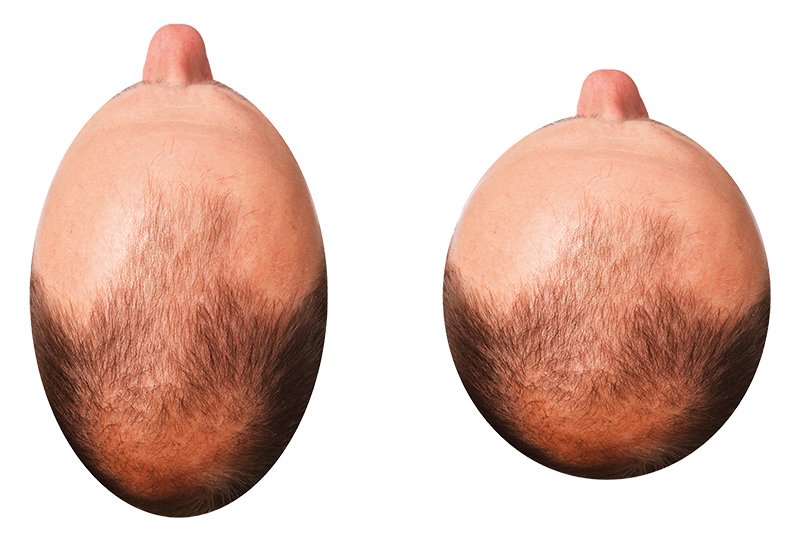
ut when it comes to sizing, you need to be mindful of the Schuberth’s internal head shape because the C3 Pro has a fairly round shape. Now, if you have more of an oval-shaped head, you might be more suited to a Shoei, but be mindful that a 59 Shoei is going to be very differently to a 59 Schuberth. A 59 Shoei will be longer front to back but narrower around the skull than the same size Schuberth. I, for example, cannot wear a Shoei because my head is wide at the back, and a Shoei always causes hot spots on the side of my skull above my ears. I can solve the problem by wearing a larger size Shoei, but that helmet will be too long, front to back. My point is this; if you’re thinking about a C3 Pro, go to a dealer that knows about helmet fitting. Make sure they do the Neotec as well, so that you can compare and contrast. Then you can see which helmet works best for you. We know, by the way, just such a dealer in Guildford!
We’ve tacked the E1 on to the end of this review; and we’ve done this because the E1 is essentially the C3 Pro with knobs on. Some think it’s a different helmet because it appears to have a longer chin, but that’s nothing more than an add on. In every meaningful way the E1 is the C3 Pro.
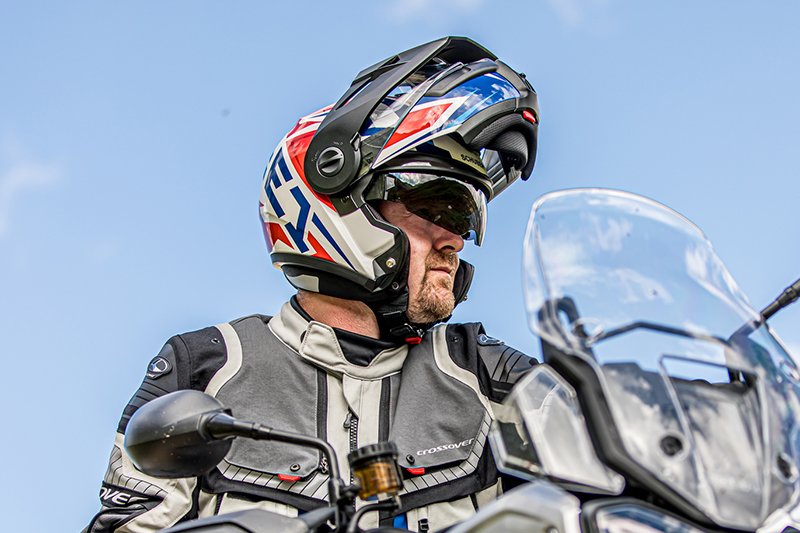
There are not many flip-front adventure helmets. It was perhaps a clever piece of thinking on Schuberth’s part when they first came up with the idea. The upside is that, if you’re working hard off road, the opportunity to occasionally raise the front of the helmet will potentially to get some extra cooling air on to the face.
The downside is that the C3 Pro/ E1 are not light helmets in the way that off road helmets are. We also know from personal experience that the sand and mud that are often a feature of a big off-road adventure can wreak havoc with a flip-front’s complicated lifting mechanism. That same mud and sand can also interfere with the mechanism of the drop-down sun visor.
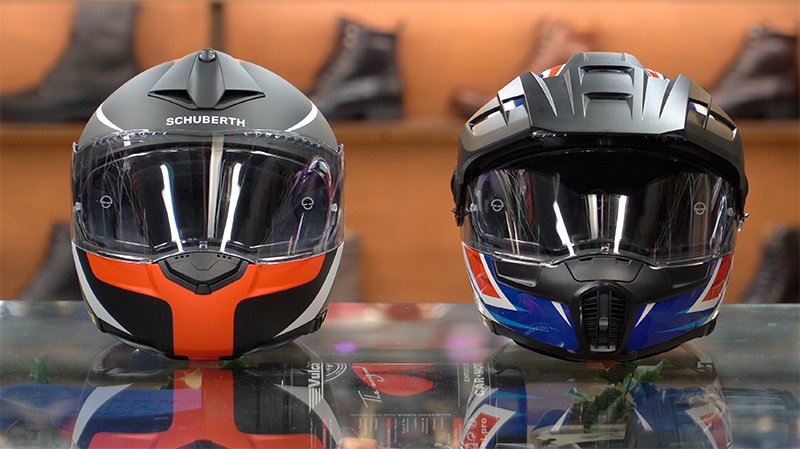
There are two key differences between the C3 pro and the E1.
There’s the aforementioned larger chin vent. This allows the rider working hard off road to get more air into the helmet. That vent works well; if there is a downside, it is that this incoming air makes the E1 a little less quiet than the C3 Pro.
The other difference is the peak. Now, everybody on an adventure bike feels they need to have a peak. It completes the look. Personally, we are not completely convinced about the benefits of a peak if you have a drop-down sun visor. But some swear by the benefits of a peak. But there is a downside to the peak; and frankly we don’t think the peak on the E1 is a particularly good one. The issue is that, on the road at road speeds, air coming over the top of the screen can cause the peak to vibrate; and that doesn’t make for a comfortable ride. (A vibrating peak will also make for a noisier helmet). If the peak vibrates when you’re riding your bike, it is not a fault with your helmet; it’s just the way it is. But, handily, you can convert the helmet to run without a peak; you just need to use the blanking plates on the visor.
So, that’s the E1. It is more expensive that the C3 Pro. It is more adventure-riding in its styling. There are some trade-offs, particularly with the peak. If the peak causes problems for you, simply convert it back to a more traditional full-face. But if you want the benefits of a top-quality flip-lid like the C3 Pro, and a peak to boot, knock yourself out. The E1 may be just what you're looking for!
The newest Schuberth flip-lid is the Schuberth C5 which was launched in 2022 and is certified to the new EC 22-06 legislation. The similar adventure version is the Schuberth E2.
CLICK SCHUBERTH C3 PRO HELMET TO SHOP.
CLICK SCHUBERTH C3 PRO INTERCOM TO SHOP.
Share this story
































































